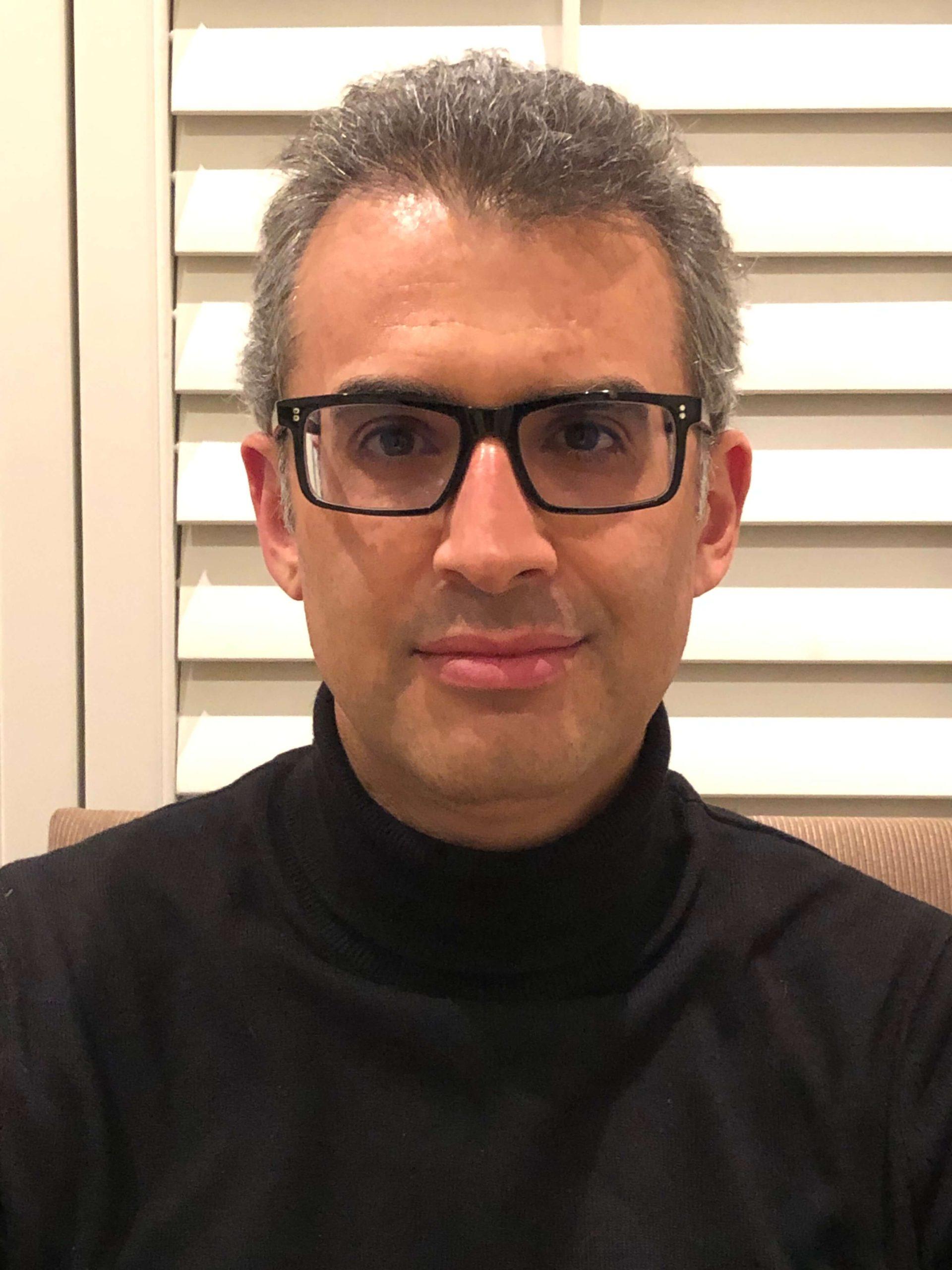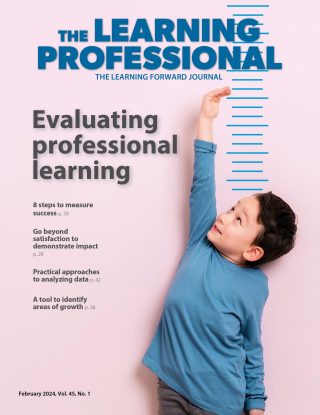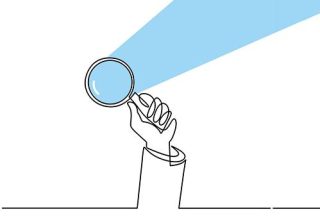FOCUS
How to achieve collective efficacy in a time of division
By Steven Katz and Jenni Donohoo
Categories: Collaboration, Continuous improvement, Facilitation, Fundamentals, Implementation, Learning designsFebruary 2022
Although there is a wealth of research about what works in schools for both teachers and leaders, it has been an ongoing challenge to ensure quality implementation of those practices.
We might know what these practices are, but how do we make sure they get established and maintained as intended when schools are full of changing conditions and unexpected challenges — especially in our current, unpredictable times?
We define quality implementation as a process through which the promise of evidence-based practices is realized in real-world settings. The process involves a critical mass of people applying the practice, assessing impact relative to the intended outcome, and then learning about what did or didn’t work and why. The school or organization can then make necessary modifications to the practices (Donohoo & Katz, 2020).
In this article, the evidence-based practices that we are concerned with relate to school leadership, not least of which involves the work that school leaders do to improve the instructional program in schools while simultaneously managing a whirlwind of operational demands (see Katz et al., 2018).
Collaboration is an essential ingredient of quality implementation, as it is for most high-quality professional learning. But while collaboration sounds easy, it is anything but. It’s not difficult to put a group of people together, but how do you ensure that being together adds value? And how do you avoid getting mired in conflicts and contradictions?
''Collaboration is an essential ingredient of quality implementation, as it is for most high-quality professional learning.'' #TheLearningPro Click To TweetThese are the questions we have faced in our recent work with school leaders. No matter the situations they are facing, we find that an intentional mindset and defined collaboration protocols are key to addressing them.
Collaboration and its pitfalls
When leaders are not intentional about group relationships and processes, there are several potential pitfalls to collaboration, including contrived collegiality (Hargreaves & Fullan, 2012), the potential for diffusion of responsibility, and challenges with ideas that get automatically shared before their quality can be assessed (Katz et al., 2009).
An additional potential pitfall to collaboration is what Sunstein and Hastie (2015) refer to as “happy talk” — those polite conversations that remain superficially focused on sharing stories of practice rather than probing more deeply into issues related to learning, teaching, and impact.
Subconscious cognitive biases can also derail the process of achieving quality implementation, and they have been amplified by the current climate of political and personal tensions in schools. Central among these is what psychologists call the binary bias — the tendency to reduce complex issues into either/or polemics. Should we focus on student well-being or on identifying academic skill gaps? Should we champion online learning or in-class learning going forward? Do we focus on building equity consciousness or on school improvement? And so on.
Yet complex problems are best understood as continua. For example, equity work should be school improvement work, not an alternative. There is no one right strategy to dealing with entrenched challenges, and furthermore, focusing on being right isn’t a strategy (Pascal, 2020).
Rethinking how we engage in collaboration
In his book, Think Again, Adam Grant (2021) tells us that regardless of what work we do, we routinely fall into four specific roles as we engage with others:
- While in preacher mode, individuals are set on promoting their ideas, at the expense of listening carefully to others.
- While in the prosecutor role, individuals actively attack the ideas of others to succeed at winning an argument.
- The politician in us seeks the approval of others and has little concern for the truth.
- The scientist in us is on a search for truth through hypothesis testing. In trying new things in practice and assessing outcomes, scientists are constantly revising their thinking as new information becomes available.
In the first three roles, the truth takes a back seat to being right, defending beliefs, and gaining favor. Grant’s argument is that taking the scientist role offers a superior path to improved thinking and lifelong learning — and we would add that the scientific mind offers a superior path to achieving quality implementation as well. It’s important to note that you don’t have to be a scientist by profession to think this way. Anyone can take on this role by being intentional about it.
Collective work must be coordinated in a way that brings out our scientists and dials down the preacher, prosecutor, and politician — roles we tend to retreat toward when engaging in contentious contexts. As psychologist Peter Coleman has found during studies in his Difficult Conversations Lab, the best phrase we can start with in these spaces is, “It’s complicated.”
Collective work must be coordinated in a way that brings out our scientists & dials down the preacher, prosecutor, & politician — roles we tend to retreat toward when engaging in contentious contexts. #TheLearningPro Click To TweetThe power of protocols
One of the tools for professional learning that we have found useful for leaning into the requisite complexity is the use of protocols (Katz & Dack, 2013). Through protocols — structured sets of guidelines to promote effective and efficient communication and problem-solving — leaders can facilitate keeping team members in the scientist mode and away from acting like a preacher, prosecutor, or politician. They can intentionally interrupt the shortcomings of collaborative spaces, including the binary bias.
We witnessed the power of protocols recently as we facilitated a consultancy protocol with a cohort of newly appointed school leaders participating in a yearlong leadership development opportunity.
We began by asking them to think of an adaptive challenge related to their current leadership practice, explaining that their adaptive challenge should be an issue that raises questions, an idea that seems to have conceptual gaps, or something they just can’t figure out.
We asked them to consider: Was this issue bothering them enough that it kept them up at night? Was it important to them and something they were willing to work on? And, most importantly, was it something they could affect directly by changing their practice?
Next, we provided some time for reflective writing and offered the following prompts:
- Why is this an adaptive challenge for you?
- What or where is the tension in your challenge?
- If you could take a snapshot of the challenge, what would you/we see?
- What have you already done to try to remedy or manage the dilemma?
- What have been the results of those attempts?
- Who needs to change? Who needs to take action to resolve this adaptive challenge?
- What do you assume to be true related to the adaptive challenge?
- How have these assumptions influenced your thinking about the challenge?
Then we asked them to create a focus question that summarized their dilemma and that would help to focus feedback. For example: How do I find time to focus on improving the instructional program by observing classroom practice and providing constructive feedback to teachers (a key evidence-based leadership practice), while the operational demands of the job right now make this feel impossible?
The next step was introducing the consultancy protocol and explaining that its purpose was to help them think more expansively about their adaptive challenge. We outlined the roles of presenter, facilitator, and participants.
Once divided into diverse smaller teams of six, the school leaders determined who would present and who would facilitate. These roles rotated over the course of the sessions.
Next, we provided the steps of the protocol:
1. The presenter gives an overview of the adaptive challenge and frames a question for the consultancy group to consider. (5-7 minutes)
2. The consultancy group asks clarifying questions, which are focused on facts, to the presenter. (5 minutes)
3. The consultancy group asks probing questions to help the presenter think more deeply about the adaptive challenge. Examples of probing questions include: “What would have to change for you to successfully address the challenge?” and “What are you most afraid will happen?” Probing questions do not include advice or “should.”
4. Members of the consultancy group talk with each other about the adaptive challenge while the presenter stays silent and takes notes. (10 minutes) They consider:
- What did we hear? What didn’t we hear?
- What assumptions seem to be operating?
- What questions does the adaptive challenge raise for us?
- What have we done in similar situations?
5. The presenter reflects on what he/she heard and on what he/she is now thinking, sharing with the group anything that resonated with him/her during the consultancy. (5 minutes)
Following these steps, we debriefed the protocol with the larger group by asking them how the protocol worked for them and when and how they might use it in their own work. As we listened to the teams engage in their conversations, it verified for us how the consultancy protocol helped to interrupt the binary bias.
In one example, while sharing an overview of her adaptive challenge (step 1), the school leader who volunteered to present expressed her frustrations of dealing with the day-to-day demands of crisis management and mounting regulations.
She spoke of the evolving role of additional duties and said that there was little margin for anything other than the management aspect of an administrator’s job today. She longed to return to the days where she was an instructional leader.
“How can I focus on instructional leadership given the amount of time that is required to deal with managerial issues in my school?” she asked the team. It was clear that she viewed the managerial and instructional aspects of her practice as an either/or polemic.
As the protocol continued to unfold, the consultancy team posed clarifying and probing questions (steps 2 and 3) and then during step 4, the presenter listened in as her team talked about her dilemma.
In the final step of the protocol, the presenter had tangible ideas about how she could enact both aspects of her leadership position. For example, rather than thinking about management and instructional leadership as the properties of a single individual leader with positional authority (her), what if management and instructional leadership were defined as functions with associated behaviors, and these were distributed across multiple people within the school in a way that was aligned with their respective expertise?
Seeing shades of gray
For school systems to meet the needs of all students, school leaders will need to find ways to support teachers’ quality implementation of evidence-based strategies, regardless of the challenges posed by the current climate of political and personal tensions.
Such tensions have the propensity to reduce complex issues to either/or polemics and set up an oppositional dynamic that is the stuff of preachers, prosecutors, and politicians. Intentionally interrupting this binary bias in collective spaces means engaging as scientists would. It means relocating polar thinking onto a continuum.
As Grant (2021) stated, “Instead of treating polarizing issues like two sides of a coin, look at them through the many lenses of a prism. Seeing shades of gray can make us more open” (p. 255).
Using protocols as an intentional interruption strategy (Katz & Dack, 2013) can force us into a space that allows us to practice “integrative thinking.” In his book, The Opposable Mind, Roger Martin (2007), the architect of integrative thinking, helps us understand that the tension between opposing ideas is never considered a bad thing because there are likely valid perspectives in both of the either/or positions.
''Using protocols as an intentional interruption strategy can force us into a space that allows us to practice 'integrative thinking.''' #TheLearningPro @Jenni_Donohoo Click To TweetOur task as scientists is to use protocols to dive into these opposing positions by articulating what each means, examining their similarities and differences, identifying assumptions that may exist around each of them, and exploring all possibilities in a positive way (Katz et al., 2018).
About the consultancy protocol
The consultancy protocol was adapted from the National School Reform Faculty consultancy protocol, which can be found at:
www.nsrfharmony.org/wp-content/uploads/2017/10/consultancy_0.pdf
References
Donohoo, J. & Katz, S. (2020). Quality implementation: Leveraging collective efficacy to make “what works” actually work. Corwin Press.
Grant, A. (2021). Think again: The power of knowing what you don’t know. Viking.
Hargreaves, A. & Fullan, M. (2012). Professional capital: Transforming teaching in every school. Teachers College Press.
Katz, S. & Dack, L. (2013). Intentional interruption: Breaking down learning barriers to transform professional practice. Corwin Press.
Katz, S., Dack, L., & Malloy, J. (2018). The intelligent, responsive leader. Corwin Press.
Katz, S., Earl, L., & Ben Jaafar, S. (2009). Building and connecting learning communities: The power of networks for school improvement. Corwin Press.
Martin, R. (2007). The opposable mind: How successful leaders win through integrative thinking. Harvard Business School Press.
Sunstein, C. & Hastie, R. (2015). Wiser: Getting beyond groupthink to make groups smarter. Harvard Business School Press.
Categories: Collaboration, Continuous improvement, Facilitation, Fundamentals, Implementation, Learning designs
Recent Issues
TAKING THE NEXT STEP
December 2023
Professional learning can open up new roles and challenges and help...
REACHING ALL LEARNERS
October 2023
Both special education and general education teachers need support to help...
THE TIME DILEMMA
August 2023
Prioritizing professional learning time is an investment in educators and...
ACCELERATING LEARNING
June 2023
Acceleration aims to ensure all students overcome learning gaps to do...













